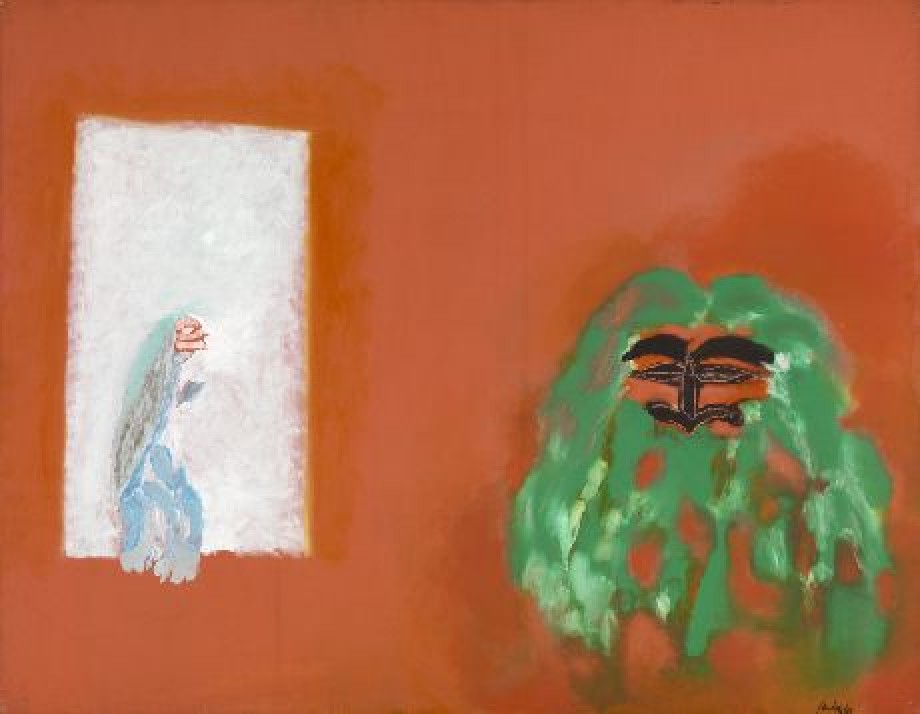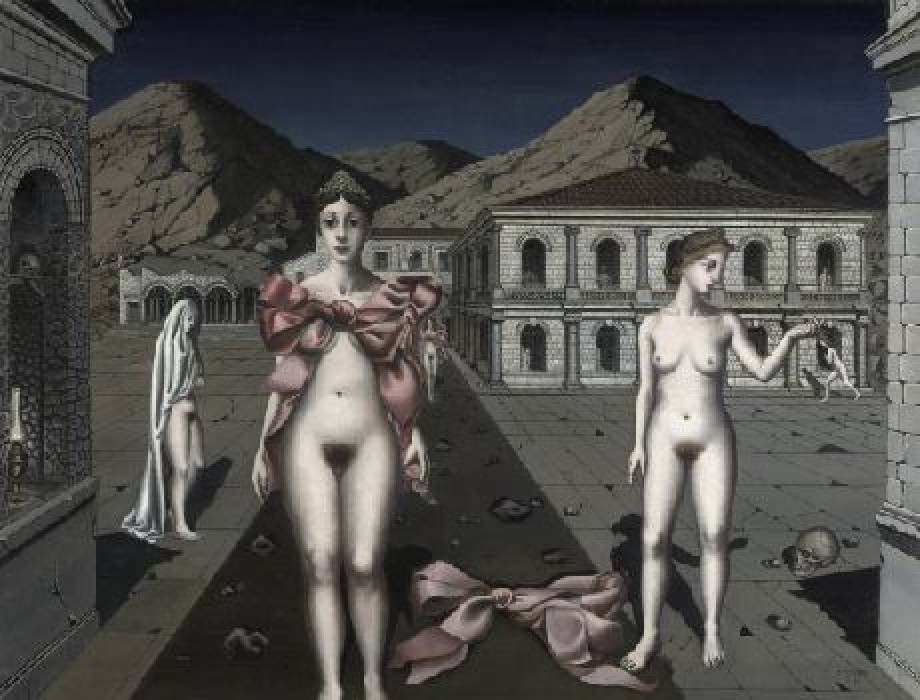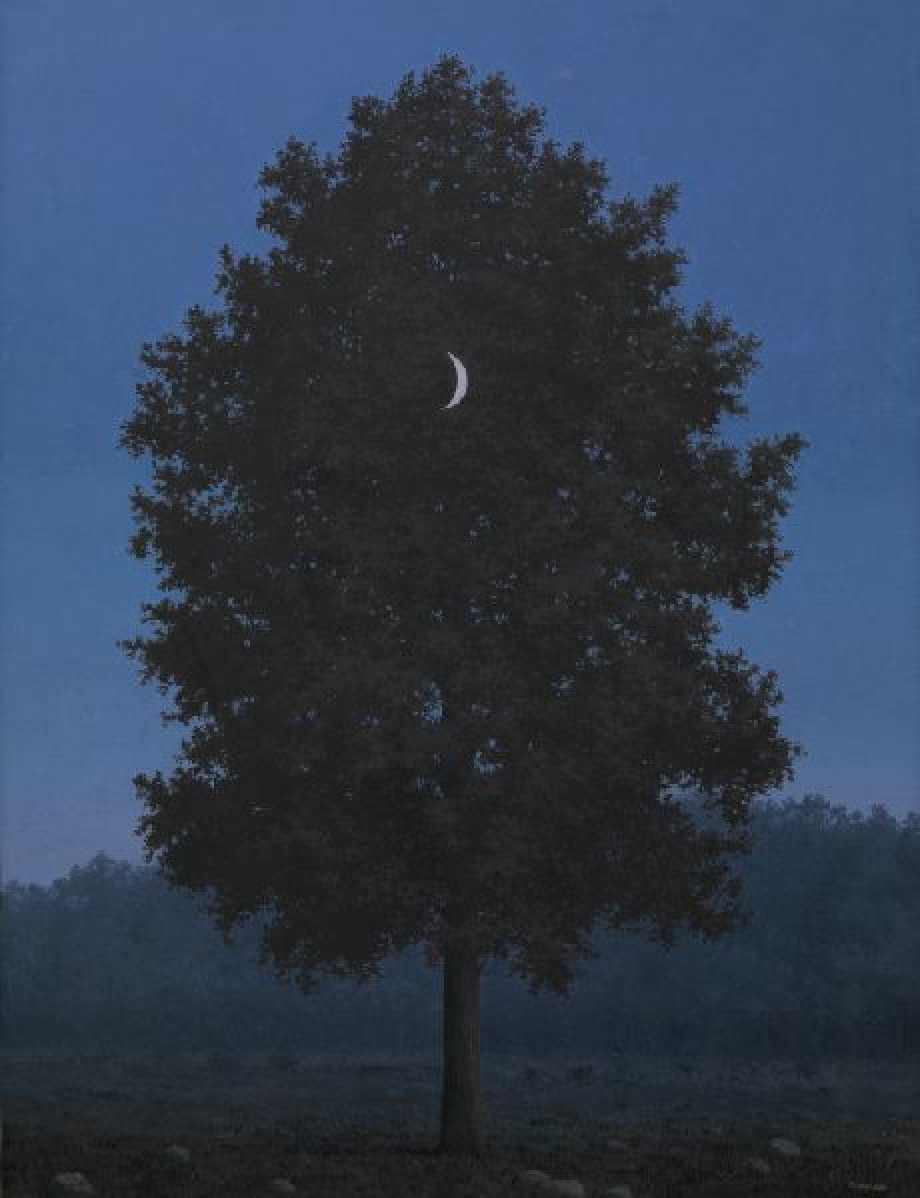H-Hour III

Artist / maker
Pyke Koch (painter)Date
(1971)Period
20th centuryCollection
Royal Museum of Fine Arts Antwerp
‘At home the talk was mainly about the Cold War. My father was a cold-warrior, very anti-Russian’, according to Peter Koch, the artist’s son, at the opening of the exhibition The worlds of Pyke Koch in 2017 in the Central Museum in Utrecht. The H-Hour is the military hour of truth, the moment of the attack. At dusk or dawn…
Read more
‘At home the talk was mainly about the Cold War. My father was a cold-warrior, very anti-Russian’, according to Peter Koch, the artist’s son, at the opening of the exhibition The worlds of Pyke Koch in 2017 in the Central Museum in Utrecht. The H-Hour is the military hour of truth, the moment of the attack. At dusk or dawn, by the light of the moon, this painting shows a Russian attack. Soldiers, tanks and other weaponry are dropped by parachute above a hilly landscape. The mood is bleak and ominous, the surprise seems to be complete. This is a picture of doom: the last hour seems to have sounded for everything in the foreground, mainly an elite golf course. Koch’s cherished aristocratic world appears to be at the end of the road, at the 18th hole at the end of the journey. You wonder whether the two figures shrouded in drapery – they recall the deliberately foreshortened Christ in The agony in the garden of Gethsemane of 1458-1460 by Andrea Mantegna or Giovanni Bellini – are lying asleep, unsuspecting, or have already been killed from a distance.
The bizarre ambiguity and apparent disconnectedness – in the end the delicately descending parachutes seem less menacing than the sombre mood on the golf course – is a prime feature of Koch’s Neo-Realist style known as ‘magic realism’, which according to this artist employs ‘scenes that are possible but unlikely; Surrealism, on the other hand, of impossible, non-existent or impermissible situations’. Yet there is a clear affinity. For example, the markers on the golf course – unmistakable flags, striped posts and a golf ball polisher – do vaguely recall the far less recognisable biomorphic forms in the dreamscapes of the Surrealist Yves Tanguy. Koch’s cool colours and the slick, alienating style are also reminiscent of the work of Paul Delvaux, which can just as well be categorised as Magic Realism than as Surrealism, or perhaps even more so.
This ‘unreal’ painting is a late but obvious reference to Koch’s controversial political convictions. . He was anti-Russian, and in the 1930s an admirer of Mussolini’s fascism. As a member of the Dutch National Socialist Movement he collaborated for a while with the German Nazis. In that respect he differed markedly from other Dutch artists grouped together under the umbrella of Magic Realism like Carel Willink, Raoul Hynckes, as well as Charley Toorop, Dick Ket, Wim Schuhmacher and Edgar Fernhout. The term ‘Magic Realism’ was coined in 1925 by the German art theorist Franz Roh, and was initially confused with the German Neue Sachlichkeit, the concept used to describe the work of artists like George Grosz or Otto Dix.
As the Roman numerals indicate, H-Hour III is the third version of this mysterious scene. The artist made it specially for the KMSKA exhibition Magic realism in the Netherlands (1971), and its size was intended to make it a pair with Female sleepwalker resting II (1964). The first, far smaller, 1958 version of H-Hour is in the Centraal Museum, Utrecht.
Martinus Nijhoff, the poet and friend of Koch, had written the poem Het uur U (H-hour) back in 1936. Some of Nijhoff’s poetic expressions, such as ‘the ominous but inaudible sound of the faded flier message high up in the sky’ are given a free, expressive reinterpretation in this painting.
Read less











